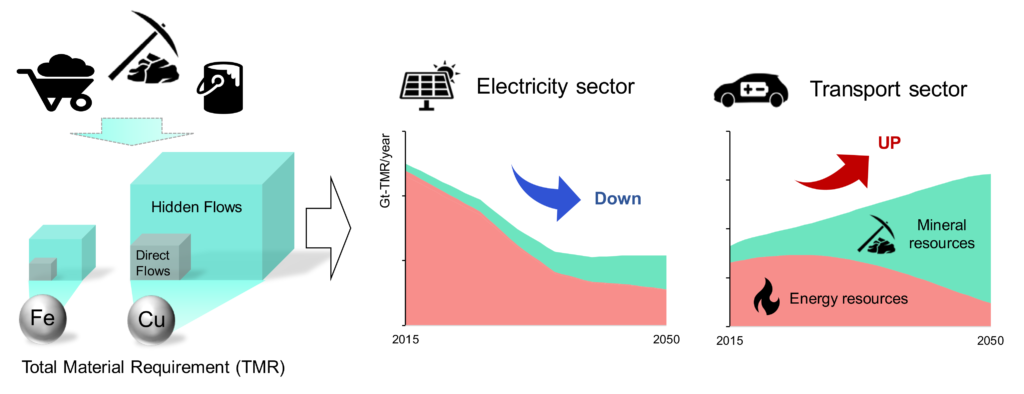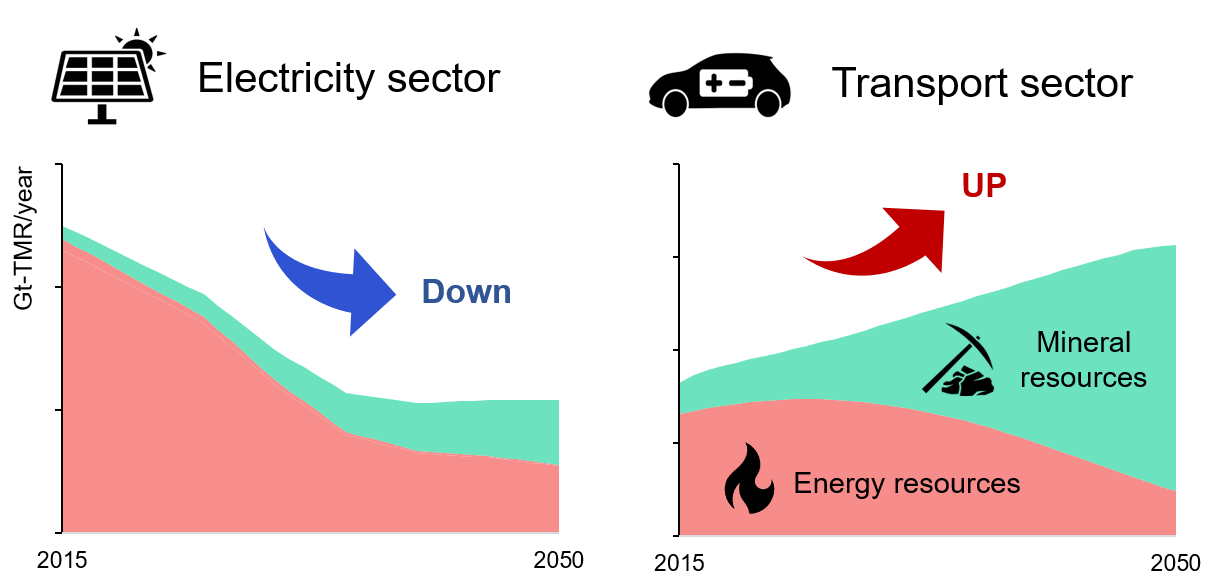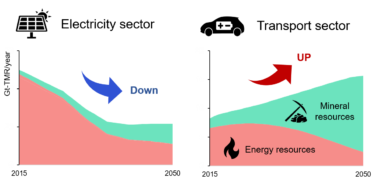
著者
Takuma Watari, Benjamin McLellan, Damien Giurco, Elsa Dominish, Eiji Yamasue and Keisuke Nansai
掲載誌
Resource Conservation and Recycling, 2019, 148, 91-103, Link
要旨
Global energy transitions could fundamentally change flows of both minerals and energy resources over time. It is, therefore, increasingly important to holistically and dynamically capture the impacts of large-scale energy transitions on resource flows including hidden flows such as mine waste, as well as direct flows. Here we de- monstrate a systematic model that can quantify resource flows of both minerals and energy resources under the energy transition by using stock-flow dynamics and the concept of Total Material Requirement (TMR). The proposed model was applied to the International Energy Agency’s scenarios up to 2050, targeting 15 electricity generation and 5 transport technologies. Results indicate that the global energy transition could increase TMR flows associated with mineral production by around 200–900% in the electricity sector and 350–700% in the transport sector respectively from 2015 to 2050, depending on the scenarios. Such a drastic increase in TMR flows is largely associated with an increased demand for copper, silver, nickel, lithium and cobalt, as well as steel. Our results highlight that the decarbonization of the electricity sector can reduce energy resource flows and support the hypothesis that the expansion of low-carbon technologies could reduce total resource flows expressed as TMR. In the transport sector, on the other hand, the dissemination of Electric Vehicles could cause a sharp increase in TMR flows associated with mineral production, which could offset a decrease in energy re- source flows. Findings in this study emphasize that a sustainable transition would be unachievable without designing resource cycles with a nexus approach.


